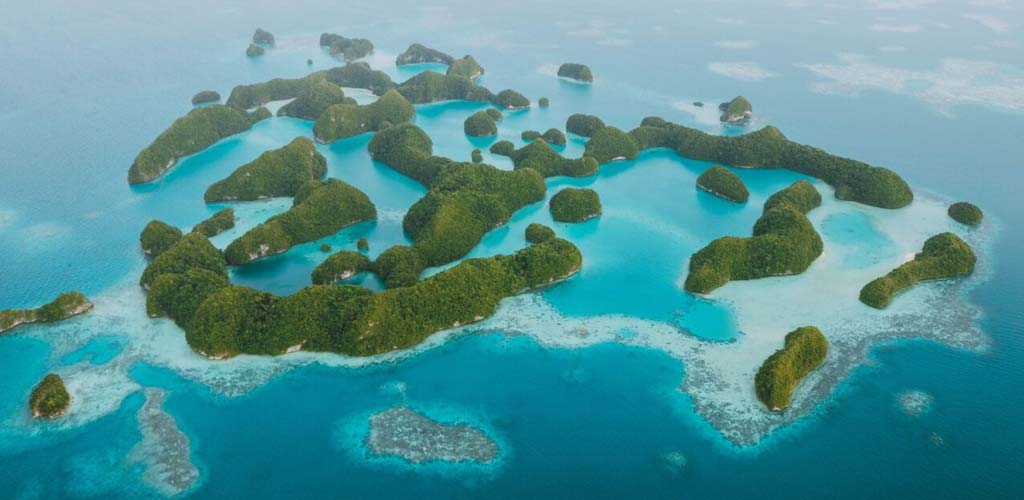
Nestled in the heart of the Western Pacific Ocean lies a hidden gem that’s often overshadowed by its more famous neighbours. Palau, an island nation consisting of over 500 lush, emerald islets, is a treasure trove of natural wonders, culture, and stunning marine life. While it might not be the first destination that comes to mind for many travellers, those who venture to this unspoiled paradise are in for an unforgettable experience.
Palau’s allure lies in its untouched beauty, where crystal-clear waters meet dense jungles, and traditional culture thrives alongside modernity. It’s a place where coral reefs and diverse marine life realise a diver’s dream, and ancient customs and traditions are celebrated with pride. So, join us as we peel back the layers of Palau, revealing a destination that promises to be more epic than you could have thought!
Situated in the western Pacific Ocean, Palau finds itself to the southeast of the Philippines, west of the Federated States of Micronesia (FSM), and northeast of Indonesia. This unique geographical positioning is what lends Palau its distinct charm and makes it an alluring destination for travellers seeking both natural beauty and aquatic adventures.
While Palau stands as its own sovereign nation today, its journey has been intertwined with that of the FSM in the past. Together, they were once part of the Trust Territory of the Pacific Islands, under the administration of the United States after World War II. However, in 1994, Palau chose its path by opting out of the Compact of Free Association’s extension with the United States, asserting its full sovereignty.
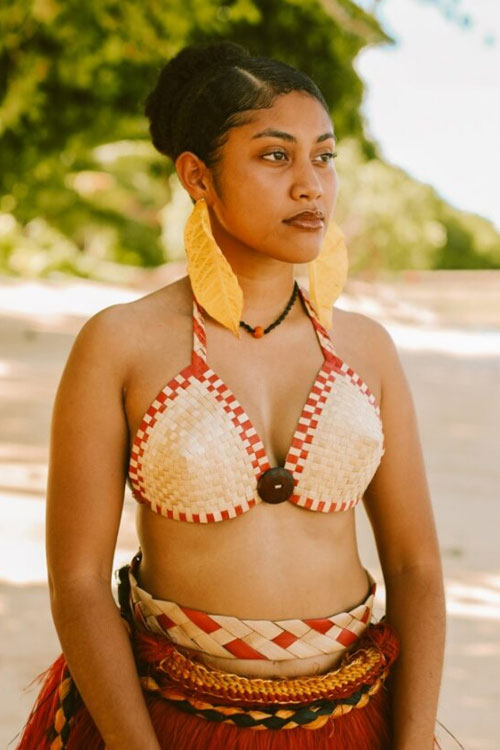
Palau’s population is primarily composed of Palauans, a Micronesian people known for their strong sense of community and connection to their ancestral lands. They have preserved their traditions, language, and customs for generations. Apart from Palauans, Micronesians from other states of the Federated States of Micronesia (FSM) have also made Palau their home. This intermingling of Micronesian cultures has enriched Palau’s cultural tapestry.
Due to its historical association with the United States as part of the Trust Territory of the Pacific Islands, Palau has a notable American influence. This is reflected in various aspects of life, from education to popular culture.
The population of Palau is relatively small, with approximately 18,000 residents. The capital, Ngerulmud, located in Melekeok State, is home to the nation’s government institutions. Koror, the largest city, serves as the economic and commercial hub. One of the most striking aspects of the people of Palau is their warm and welcoming nature. Visitors often find themselves embraced by the genuine hospitality of the locals, who are proud to share their culture and traditions with those who journey to their shores.
The Palauan society is built on a strong sense of community and collective responsibility. This is evident in their traditional practices, such as the ‘bai,’ communal meeting houses used for gatherings and decision-making. Local gatherings, known as ‘bul,’ play a significant role in the community’s social fabric. These events bring people together for celebrations, ceremonies, and the exchange of stories and knowledge.
Despite the influence of modernity, Palauans have maintained their cultural heritage, and traditional practices continue to be an integral part of daily life. Festivals, dances, and rituals provide a window into Palau’s rich cultural tapestry.
Visitors will find that age-old traditions, customs, and folklore are still very much alive. The Palauan language, with its unique blend of Micronesian and Polynesian influences, is an essential part of cultural identity. The people of Palau maintain a strong connection to their ancestral customs. The ‘bai,’ traditional meeting houses adorned with symbolic carvings, are central to many cultural gatherings and ceremonies. These beautifully crafted structures provide insights into the islanders’ spiritual beliefs and social structure.
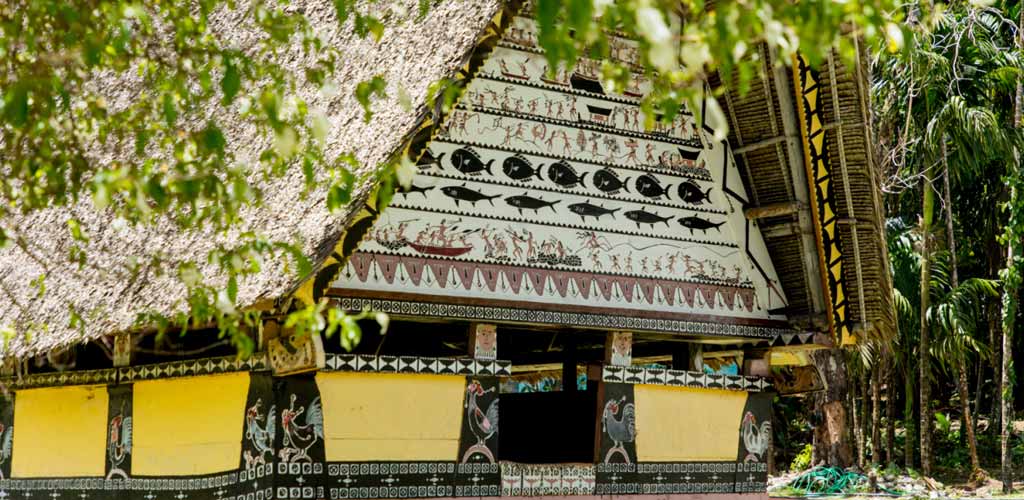
Throughout the year, Palau hosts a variety of festivals and celebrations that provide an opportunity for visitors to immerse themselves in the local culture. Among the most significant is the Belau Games, a multi-sport event that showcases traditional Palauan sports and competitions.
Palauan history is steeped in maritime traditions. Palauans were renowned navigators who sailed the vast Pacific Ocean using only the stars, ocean currents, and natural signs as their guides. The art of ‘wave-piloting’ is still taught and practiced today.
Then, Palau has historical significance due to its role in World War II. Visitors can explore remnants of the war, such as sunken ships and aircraft, which have now become thriving marine ecosystems. The Battle of Peleliu, in particular, left a lasting impact on the region.
Palau’s monolithic stone statues, known as ‘nguzungzu,’ are mysterious and iconic. These statues, carved from limestone, are believed to represent ancient chiefs and deities. Some are found on the mainland, while others are submerged in the surrounding waters.
The oral tradition of storytelling remains strong in Palau. Elders pass down ancient legends and myths, which often revolve around the island’s unique natural features, such as the famous Milky Way lagoon and the enigmatic Rock Islands.
In addition to its ancient traditions, Palau also has a vibrant contemporary arts scene. Visitors can explore local art galleries and enjoy traditional and modern music performances that reflect the diverse influences on the island.
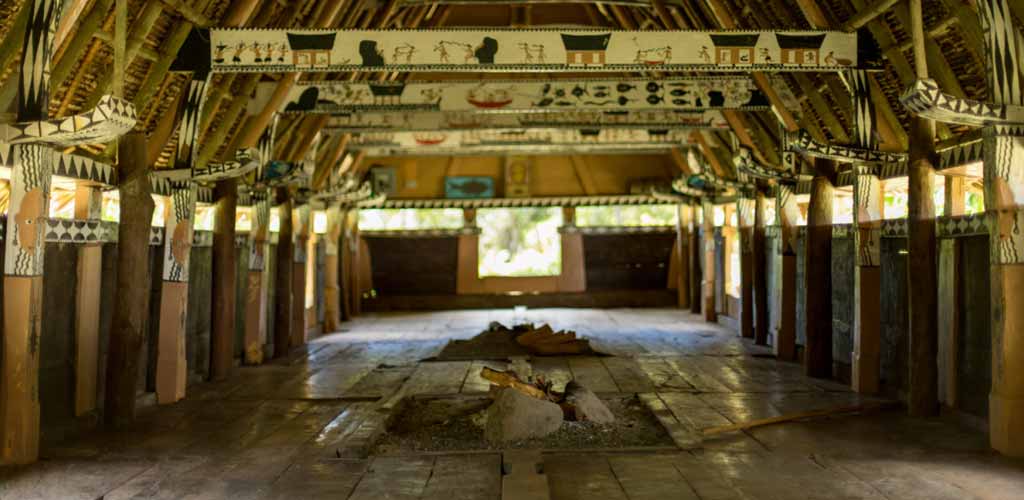
Palau’s culinary scene is a tantalizing fusion of traditional Palauan flavors and international influences, making it a delightful adventure for food enthusiasts. Palauan cuisine draws inspiration from its surroundings – the bountiful Pacific Ocean and fertile land. Seafood is, unsurprisingly, a centrepiece of Palauan meals. The catch of the day often includes a variety of fish, such as mahi-mahi, tuna, and parrotfish, prepared in various mouthwatering ways.
One of Palau’s culinary gems is ‘poke.’ This dish consists of fresh raw fish, typically marinated in a mixture of soy sauce, sesame oil, and spices. The result is a flavourful, sushi-like delicacy that’s perfect for a light and refreshing appetizer. For those seeking a more immersive culinary experience, Palau offers unique opportunities to dine with locals. Homestays and ‘bai-stays’ (traditional houses) allow visitors to savour authentic Palauan dishes prepared by gracious hosts.
Taro, or ‘taro root,’ is a staple in Palauan cuisine. It’s used to make ‘taro soup,’ a thick and creamy dish akin to a Polynesian chowder. The roots are also pounded into ‘taro pudding,’ a sweet dessert often served at celebrations. Another Palauan favourite is ‘umukai,’ a communal feast prepared by burying food in an earth oven. This ancient cooking method imparts a unique smoky flavour to dishes like fish, pork, chicken, and root vegetables. Don’t miss the opportunity to sample ‘bat soup’ if you’re feeling adventurous! Made from fruit bats, coconut milk, and spices, this traditional dish offers a distinctive taste of Palau.
International cuisine is readily available in the larger towns of Palau, offering diverse options for travellers. From Italian and Japanese to American and Filipino, you can embark on a global culinary tour without leaving the islands. But we’d recommend ‘going local’ – what’s the fun in having pizza everywhere? Bleh!
Exploring local markets is another fantastic way to discover Palauan flavours. Fresh tropical fruits, vegetables, and an array of seafood are on display. It’s a chance to witness the vibrant colours and taste the natural sweetness of Palau’s produce. To wash it all down, coconut milk, fresh fruit juices, and locally brewed beverages like ‘tuba’ (fermented coconut sap) are popular choices. Finish your meal with ‘tapioca cake,’ a sweet dessert made from cassava pearls and coconut milk!
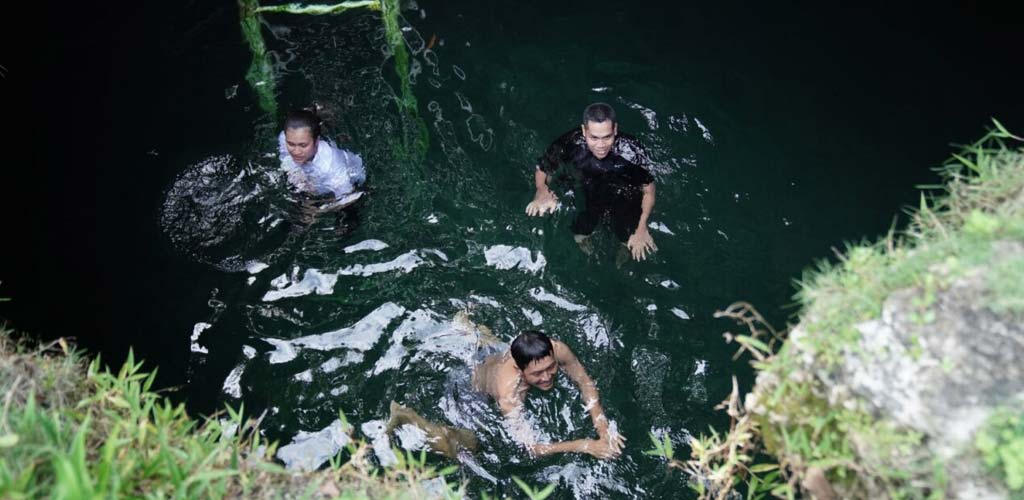
Choosing the right time to visit Palau can significantly enhance your experience. Palau enjoys a tropical climate, which means warm temperatures and some rain throughout the year. However, the best time to visit often depends on your preferences for weather, crowds, and the types of activities you want to pursue.
Dry Season (November to April): The dry season is considered the peak tourist season in Palau. During these months, from November to April, you can expect pleasant weather with minimal rainfall. This is the best time for diving and snorkeling, as the visibility underwater is excellent. The calm seas also make it ideal for kayaking and other water-based activities. However, this is the busiest time, so accommodations and tours may be pricier, and you’ll encounter more tourists.
Wet Season (May to October): The wet season, from May to October, brings increased rainfall and higher humidity to Palau. While this period is considered the off-peak season, it’s important to note that “wet” doesn’t mean constant rain. Showers are usually brief and intense, followed by sunny periods. The advantage of visiting during the wet season is fewer tourists, which means you can enjoy a quieter and more affordable trip. It’s also a great time for bird watching and lush landscapes, as the rain rejuvenates the island’s vegetation.
Festivals and Events: Consider aligning your visit with one of Palau’s vibrant festivals or cultural events. The Melekeok Constitution Celebration in March, the Palau National Tourism Month in September, and the Belau Games in December are just a few examples of occasions where you can immerse yourself in Palauan culture and traditions.
Whale Shark Season: If swimming with whale sharks is on your bucket list, plan your visit during the peak whale shark season, which runs from November to March. During this time, these gentle giants gather in Palau’s waters, offering you a chance to snorkel or dive alongside them.
Bird Watching Season: Bird watchers may want to visit during the bird migration season, which typically occurs from November to April. During this time, migratory birds pass through Palau, joining the resident bird species and enhancing the bird-watching experience.
Turtle Nesting Season: Palau is also home to nesting sea turtles. If you’re interested in witnessing this natural spectacle, plan your visit between June and August when female turtles come ashore to lay their eggs.
The best time to visit Palau ultimately depends on your interests and priorities. Whether you prefer sunny skies, fewer crowds, or specific wildlife encounters, Palau offers diverse experiences year-round, making it a destination worth exploring at any time.
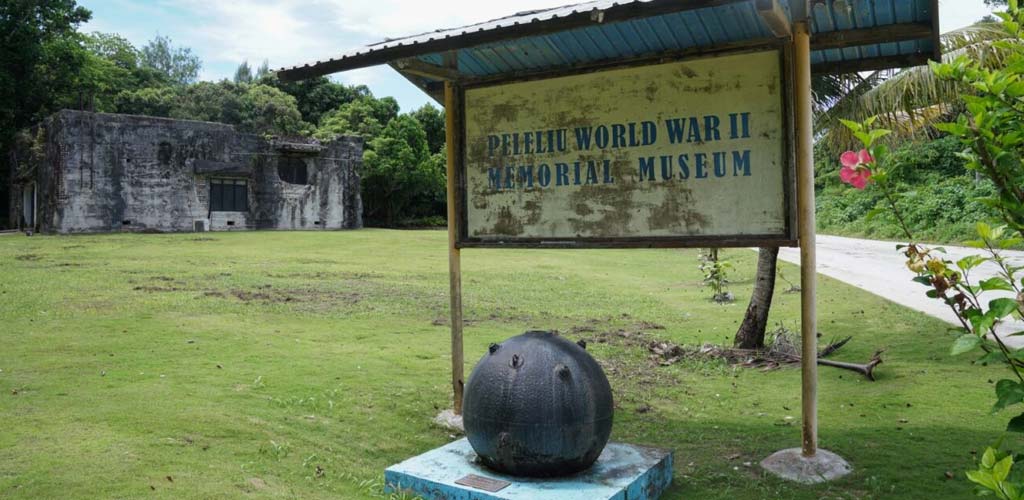
Palau offers a range of accommodation options to suit different preferences and budgets. Whether you’re looking for luxury resorts, cozy guesthouses, or eco-friendly lodges, Palau has you covered. As the largest city and commercial hub of Palau, Koror is home to numerous hotels and resorts catering to a wide range of budgets. You’ll find luxury waterfront resorts with stunning views, as well as mid-range and budget-friendly options. Staying in Koror provides easy access to restaurants, shops, and tour operators. Then, located near Koror, Malakal Island is known for its dive shops and waterfront resorts. This area is ideal for divers and snorkelers who want to explore Palau’s famous dive sites like Blue Corner and the Rock Islands. You can find accommodations that offer dive packages and equipment rentals.
If you’re interested in World War II history, consider staying on Peleliu Island. It’s home to historical sites like the Peleliu Battlefield and offers a more tranquil atmosphere compared to the bustling city of Koror. There are several guesthouses and small resorts on the island. For those seeking an eco-friendly and off-the-beaten-path experience, Ngardmau offers unique jungle lodges and eco-resorts. You can immerse yourself in Palau’s natural beauty while staying in sustainable accommodations. Palau also boasts private island resorts for travellers looking for exclusivity and luxury. These resorts often offer overwater bungalows, private beaches, and personalised services. While they come at a higher price point, they provide an unforgettable tropical escape.
But… to experience real local Palauan culture and hospitality, consider staying in a homestay. Some Palauan families offer guest accommodations, providing an authentic and immersive experience. It’s an excellent way to connect with the locals and learn about their way of life. Palau is also committed to environmental conservation, and you’ll find eco-friendly accommodations that follow sustainable practices. These properties often focus on minimising their environmental impact while offering comfortable lodging.
Remember that Palau is a remote destination, so accommodation options may vary in terms of amenities and services compared to more developed tourist destinations. Nonetheless, the warm hospitality of the Palauan people and the stunning natural surroundings make every stay a memorable experience.
Palau offers visitors a captivating blend of pristine nature and vibrant culture.
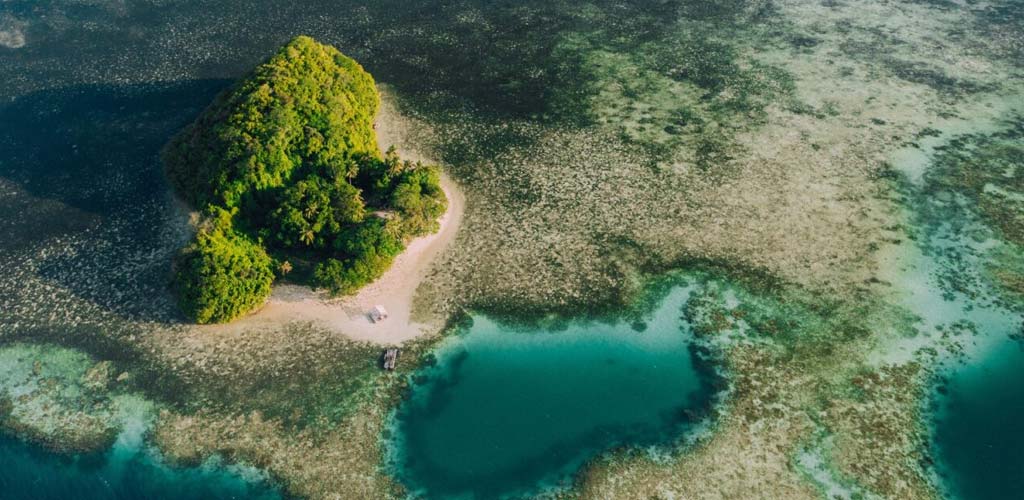
Palau stands as a true gem in the Western Pacific, offering a blend of captivating natural wonders, vibrant culture, and warm hospitality. This remote archipelago, nestled in the heart of Micronesia, beckons adventurers and nature enthusiasts to its pristine shores. As you explore Palau’s unspoiled paradise, you’ll discover a world teeming with life beneath its crystalline waters and a culture deeply rooted in tradition.
With a rich history influenced by various cultures and a modern transition to nationhood, Palau is a destination where the past meets the present in perfect harmony. Its unique festivals and traditions, including the mesmerizing Bai, offer an immersive cultural experience. Check out our travel blogs, and talk to our South Pacific Specialists for great Palau holiday deals – our number’s 1300 991 751!
Get exclusive access to discounts and deals - Enter your email address, subscribe to our mailing list and earn a $50 voucher to use against your first booking!